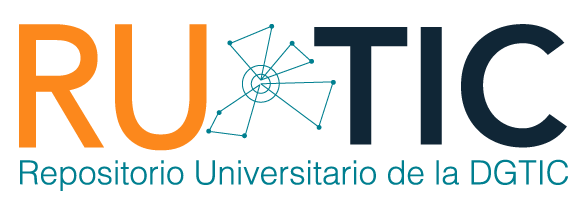| dc.contributor.editor | Adrián Estrada Corona | |
| dc.coverage.spatial | MX | |
| dc.date.accessioned | 2018-06-28T05:17:38Z | |
| dc.date.available | 2018-06-28T05:17:38Z | |
| dc.date.issued | 2011-04-01 | |
| dc.identifier.uri | https://ru.tic.unam.mx/handle/123456789/1886 | |
| dc.description | Innovación en TIC | |
| dc.description.abstract | La Anatomía Humana es una ciencia de observación. Es la disección su herramienta fundamental, pero el corte y la exposición del interior corporal no siempre fue posible, no sólo por la persecución religiosa, sino también por la dificultad de conservar el delicado equilibrio del cuerpo después de la muerte. Casi a finales del siglo XVII se inventaron las primeras técnicas para conservar cadáveres y, al mismo tiempo, se desarrolló en las escuelas de arte una técnica para representar al cuerpo humano mediante la manipulación de la cera. Artistas y anatomistas buscaron la manera de inmortalizar al cuerpo. Estas piezas se originaron, en un principio, como piezas de arte, pero al triunfo de la Revolución Francesa fueron llevadas a las aulas de la Facultad de Medicina en Paris, para servir como modelos de enseñanza. Piezas como éstas también llegaron a nuestra Centenaria Facultad de Medicina de la UNAM, para ser utilizadas en las aulas hasta finales de la década de los setenta. A partir de entonces formaron parte del Museo de Anatomía de la Facultad de Medicina. El uso de la tecnología del siglo XXI nos permite llevar este mensaje de arte, belleza y conocimiento anatómico, más allá de las fronteras físicas de un museo | es_MX |
| dc.description.abstract | The Human Anatomy is an observation science, the dissection its fundamental tool, but the cut and exhibition of the corporal interior not always were possible, not only by the religious persecution, also it is difficult to conserve the delicate balance of the body after the death. At the end of century XVII the first techniques are almost invented to conserve corpses and to he himself time a technique is developed in the art schools to represent the human body by means of the manipulation of the wax, artists and anatomists being looked for the way to immortalize to the body. These pieces were originated in a principle like art pieces, but to the triumph of the French Revolution they were taken to the classrooms of the Medicine Faculty in Paris to serve like education models. Also they arrived at our Centennial Medicine Faculty UNAM, and were used in the classrooms until end of the decade of the years 70 as of which they comprised of the Museum of Anatomy of the Medicine Faculty. The use of the technology of century XXI allows take this message of art, beauty and anatomical knowledge, beyond the physical borders of a museum | en |
| dc.format | html | |
| dc.format | application/pdf | |
| dc.format.extent | 301.5 KB | |
| dc.format.extent | 204 KB | |
| dc.language | spa | |
| dc.publisher | Universidad Nacional Autónoma de México. Dirección General de Cómputo y de Tecnologías de Información y Comunicación. Revista Digital Universitaria | |
| dc.relation.isformatof | http://www.revista.unam.mx/vol.12/num4/art45/art45.pdf | |
| dc.relation.ispartof | http://www.revista.unam.mx/index_abr11.htm | |
| dc.rights | openAccess | |
| dc.source | Revista Digital Universitaria (1607 - 6079). Vol. 12, No. 4 (2011) | |
| dc.subject | Anatomía artística | |
| dc.title | La Anatomía Humana, entre la ciencia y el arte: La colección de Cera Anatómica del Museo de Anatomía | es_MX |
| dc.title.alternative | Human Anatomy, between science and the art. The Anatomical Wax collection of the Museum of Anatomy | en |
| dc.type | article | en |
| dc.contributor.director | JULIA TAGUEÑA PARGA | |
| dc.subject.keywords | Anatomía, Anatomía artística, Cera anatómica, Modelos de cera, Museo de anatomía, Anatomy, Artistic anatomy, Anatomical wax, Wax models, Anatomy museum | |
| dc.identifier.url | http://www.revista.unam.mx/vol.12/num4/art45/index.html | |
| dc.creator | Beatriz Georgina Montemayor Flores | |
| dc.rights.url | http://creativecommons.org/licenses/by-nc-sa/4.0 |
Files in this item
This item appears in the following Collection(s)
COMPARTE
BÚSQUEDA
Escriba el texto a buscar en DSpace
CONTACTO
El Repositorio Universitario de la DGTIC se edita en la Dirección General de Cómputo y
de Tecnologías de Información y Comunicación (DGTIC), de la Universidad Nacional Autónoma de México (UNAM)
Circuito Exterior s/n, Ciudad Universitaria, Coyoacán, C.P. 04510, México, D.F
Tel: +(52) (55) 56228166 Email: rutic@unam.mx









 ¿Qué es un repositorio...?
¿Qué es un repositorio...? ¿Qué beneficios obtengo...?
¿Qué beneficios obtengo...? ¿Qué tipo de recursos...?
¿Qué tipo de recursos...? Preguntas frecuentes
Preguntas frecuentes